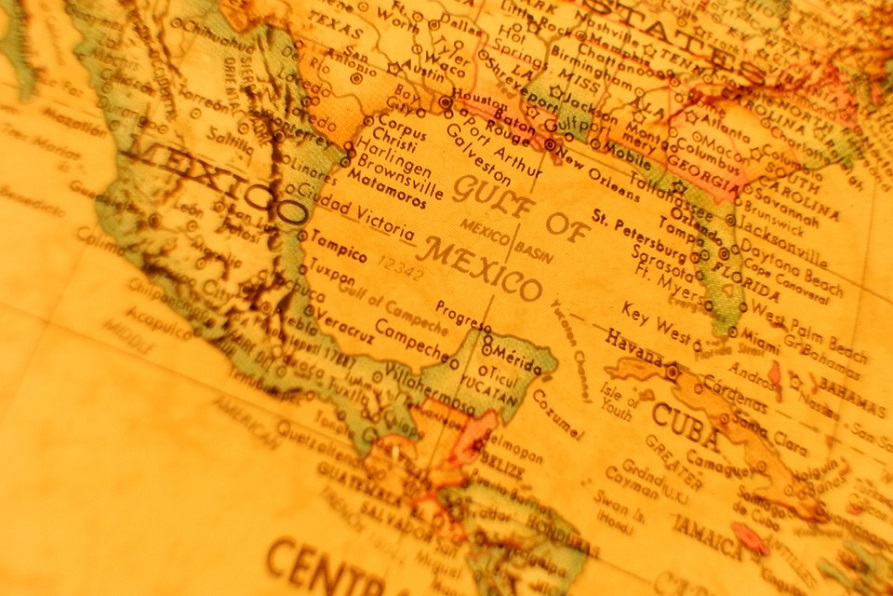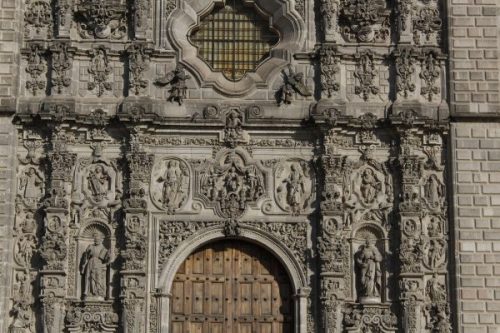For two years, it has not rained in the region of the northern state of Chihuahua and hunger is like a knife embedded in the hearts of the inhabitants of this region.
 Deisy Francis Mexidor
Deisy Francis Mexidor
The colourful clothing worn by the native rarámuri women contrasts with the sad drama of the situation in which they live.
They walk, scattered, throughout this immense region to where they once retreated, centuries ago, from the chabochi or invading Spaniards and afterwards the mixed-race, perhaps from whom they continue to run. This is the perception they leave when you look into their eyes; a feeling of astonishment towards what they possibly consider to be invasion of their privacy.
Some only speak in their native tongue and those who know Spanish are rather more introverted.
The rarámuris could disappear, reporter Abundio Marcos has previously said, leader of the National Indigenous Movement (MIN).
Marcos is of the belief that in these communities, there is a deep-set evil that cannot be resolved with food hampers, but only with effective social politics, for example, in health and education.
Children continue to be born, but one should look at the quality of their lives, believes the coordinator of the MIN.
Marcos remembers when the helicopter of the Mexican Armed Forces landed on wasteland in Baboreachi, municipality of Guachochi, in the heart of the sierra, after another attempt to reach Raramuchi, an even more intricate community.
Unfortunately, the strong wind forced them to change course. “Too heavy. Very windy. The helicopter has to make a greater effort, but we have good pilots”, said Rogelio Rodríguez, fleet captain at the time. “In Raramuchi, the situation is even worse”, he commented.
Even worse?, the interviewer stops short when faced with his first sight of Baboreachi: a lone elderly woman sat on a stone. An adobe house, clay floor, with windows covered only by some pieces of nylon, and the ceiling made of light materials through which you can see the smoke coming out of the chimney.
Afterwards, you notice the speed with which, with one voice, the village inhabitants begin to concentrate close to the aircraft. They run and descend a ravine, the women with their children loaded on their backs, in honour of their name: light (rarámuris) feet.
 But the elderly woman, whose name is Marcelina, wears a handkerchief which covers more than half of her face, and continues to sit without moving as if the helicopter does not mean anything to her at all.
But the elderly woman, whose name is Marcelina, wears a handkerchief which covers more than half of her face, and continues to sit without moving as if the helicopter does not mean anything to her at all.
It is her son, Benito Cruz, who is the one who joins the group to collect the food hamper delivered to each one of the families of the community.
What did they sow here?, is the question asked in that choked and dusty scene.
“Corn. Nothing”, Benito answers, in words they can hardly understand, as he looks at the ground. He looks like an old man, however, he is only 46, or as he likes to believe.
The state of Chihuahua is composed of three immense regions: the desert area to the north and southeast, the mountains and valleys in the centre and the east, and the Sierra Madre Occidental to the west and southwest, with an expanse of 65,000 square kilometres, where the Sierra Tarahumara is located.
How much are they immersed in this world? It is difficult to know. Even today, people survive in these places, they ignore the existence of electricity and, therefore, neither imagine the technological advances modern society has made.
The great tragedy
Although Mexican society has endorsed the urgency that comes from the Tarahumara, where some 200,000 rarámuris live, the resources they receive in these remote communities is a drop in the ocean within the great tragedy.
Within the sixteen delegations of the Federal District, they have organised centres of humanitarian aid and from other parts of the nation, they have also made efforts to this end.
The boxes distributed by the officials of the Marine Office contain blankets and alimentary products, but how long will they last the rarámuris for. When will another helicopter land again, and what will happen in a few months if weather conditions do not improve and the fields are still without crops.
 Yolanda, for example, is walking along a small footpath. She says that saving the hamper well, “will last for a few days”. This means that as until now, they only eat something once between one sunrise and the next.
Yolanda, for example, is walking along a small footpath. She says that saving the hamper well, “will last for a few days”. This means that as until now, they only eat something once between one sunrise and the next.
Somebody close to the conversation interjects, “it also depends on the quantity of mouths to be fed. There are 6 of us. This lasts me about a week”.
The majority of the men are not in the village when the helicopter lands. It is the women who load the boxes and descend the ravine, possibly getting lost in the place.
“The husbands”, as they call them, “walk around the lagoon”, a place not very far from the hamlet where they work in the sawmills.
Of the 2,428 municipalities of the Mexican Republic, 803 have at least 30% native population, where 78% is concentrated on the population originating at national level.
The Government of the President, Felipe Calderón, announced an account of 34 billion pesos (some two thousand, five hundred and eighty million dollars) to face up to the climatic adversity affecting more than half of the states of Mexico, although the most severe situation is registered in Chihuahua, Coahuila, Durango, Zacatecas and Saint Luis Potosí.
As a consequence of lack of water, a reduction of some four million tonnes in the production of corn exists compared to that of 2010, confirmed the Secretary of Agriculture, Francisco Mayorga, when referring to this basic food in the diet of the Mexican people.
Meanwhile, the National Peasant Confederation (CNC) warned that the agricultural production went down 40%, which will generate a food shortage in the coming months.
Of the four million, two hundred thousand Mexicans who fell into alimentary poverty between 2008 and 2010, almost 75% (some 3 million) live in rural areas, according to the CNC.
For the rarámuris of the Sierra Tarahumara, the current drought has only aggravated their lives. Already poor, the situation only gets worse.
The request for rain is directed at the Sun and the Moon, Father and Mother respectively. Both are the main deities in their pantheon.
For this reason, Marcelina remains seated on that stone in Baboreachi unperturbed by the noise of the helicopter. And with hardly any strength left, she raises her head to look at the sky.
(Translated by Susan Seccombe – Email: ess.translations [@] gmail.com) – Photos: Pixabay












.jpg)












